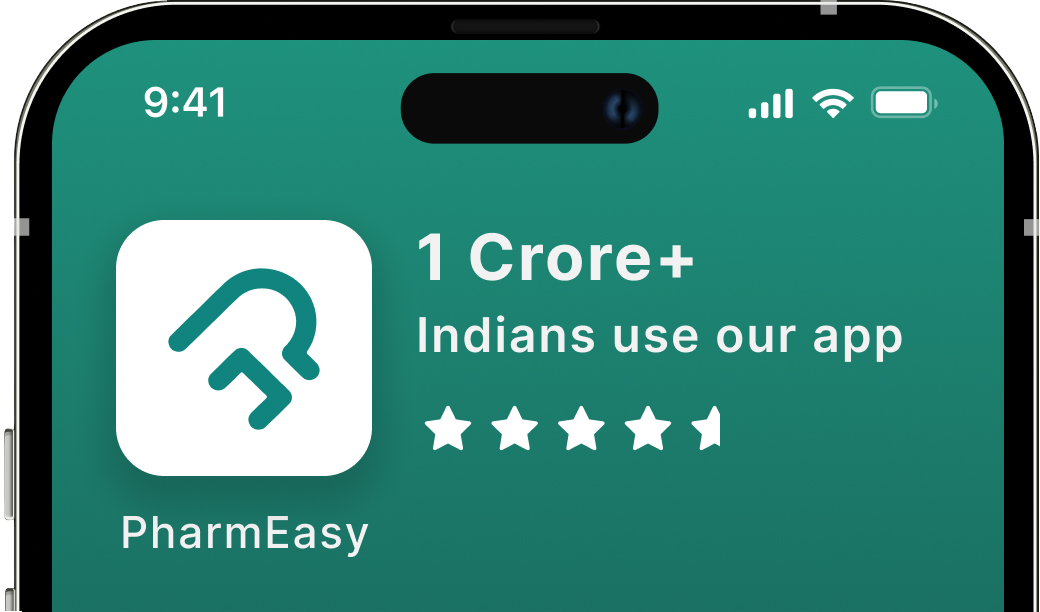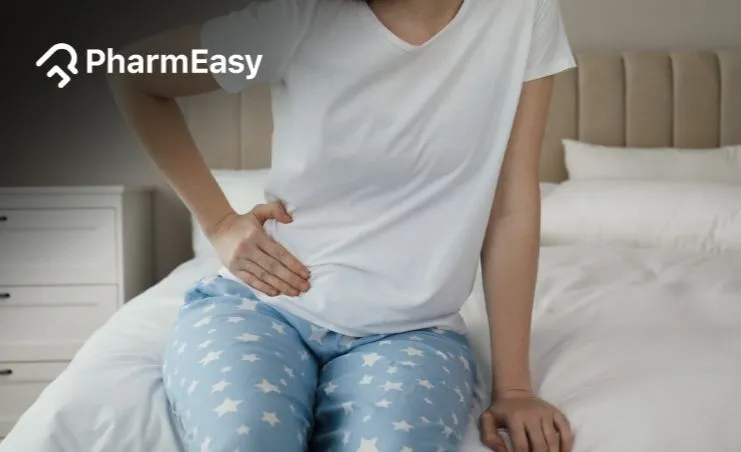Introduction
Our abdomen is like a complex puzzle and contains many vital organs that help keep us healthy. It’s also common to experience pain in this area, especially on the right side. In this article, we’ll discuss what can cause such pain. We’ll also discuss ways to diagnose the cause, how to manage or relieve the pain, and when to visit the doctor. Lastly, we will answer some frequently asked questions regarding this topic.
Causes of Right-Sided Abdominal Pain
Knowing the potential causes of right-sided abdominal pain is essential, as they lead to an accurate diagnosis and better management outcomes.
1. Acute Causes
Acute causes are conditions in which pain onset is rapid. These conditions also sometimes occur along with vomiting, fever, nausea, and abdominal distension that needs instant medical help1. They include:
- Appendicitis: This pain is caused by an inflamed appendix. It is often coupled with a high fever and nausea2.
- Gallstones: Stones in the gallbladder or those moving towards the bile ducts, may sometimes lead to pain and also block the bile ducts3.
- Kidney stones: Stones in the kidney lead to sudden intense pain. If the stones get stuck in the urinary tract, pain usually occurs with nausea4.
- Ectopic pregnancy: This is a serious condition that may occur during the first trimester, where a fertilised egg implants outside the womb. It can cause vaginal bleeding and abdominal pain5.
- Ovarian torsion: The ovary twists around the ligaments that hold it in place, cutting off its blood supply. The lack of blood flow to the ovary causes more intense pain6.
2. Chronic (Intermittent or Episodic) Causes
Chronic right-sided pain refers to pain that may come and go, may occur constantly, and last for more than 3 months. It often requires medical checkup and identifying the exact cause of the pain is challenging7. This type of pain may occur due to
- Irritable Bowel Syndrome (IBS): This is a common disorder associated with abdominal pain that worsens during or after bowel movements. IBS may change the frequency and appearance of stools7.
- Inflammatory Bowel Disease (IBD): IBD refers to conditions that cause chronic inflammation of the digestive tract, like Crohn’s disease and ulcerative colitis. Common IBD symptoms include bloody and loose stools, an urgent need to pass stools, difficulty controlling bowel movements, weight loss, and fever7.
- Endometriosis: This is a painful condition in which tissue similar to the lining of the uterus grows outside the uterus and sometimes on other organs in the abdomen. It can cause pain, often accompanied by nausea, vomiting, and loose stools8.
- Pelvic Inflammatory Disease (PID): An infection in the female reproductive organs, it often presents as chronic pain in the pelvic region, abnormal vaginal discharge or bleeding and pain during intercourse9.
3. Progressive Causes
Progressive causes of the pain in your right side are often conditions that get worse over time. They will likely need a doctor’s help.
- Liver disorders: Liver issues like acute hepatitis, liver abscess, and perihepatitis that lead to right-sided pain1.
- Kidney disorders: Conditions that affect the kidneys, like kidney infection or kidney cancer, can cause one-sided pain10.
- Gastrointestinal issues: Issues like ulcers, gastritis, and acid reflux disease (GERD) may be linked to ongoing abdominal pain1.
Diagnosis of Right-Sided Abdominal Pain
Diagnosing right-sided abdominal pain accurately is the first important step for choosing the right management option.
1. Medical History
A detailed medical history can help doctors identify the possible causes of abdominal pain1. This includes checking for parameters such as:
- Pain: Site, type, radiating or not, starting and ending time, and triggering and pain relieving factors such as food and/or position that relieves the pain1.
- Other symptoms: Fever, nausea, vomiting, weight loss, cough, difficulty in breathing, chest pain, blood in urine and in stool, constipation, and loss of appetite1.
- History of past disease or current health conditions: High blood pressure, heart disease, conditions related to the liver and gut, gastritis, and any past surgeries1.
- Medications: Ongoing medication that may cause constipation, ulcer, or immunosuppression1.
- Habits: Alcohol intake (it may lead to liver disease)1.
- Travel history: To rule out infection or inflammation1.
- Period and Pregnancy history: To rule out gynaecological or pregnancy causes in females of reproductive age11.
- Other histories: Allergies, last food intake, and any trauma in the abdomen11.
2. Physical Examination
Physical examination can help doctors find the cause of pain and help in treatment decisions12. This may include:
- Abdominal examination: The abdomen will be visually examined by checking for any visible swelling, skin changes, distention of the abdomen, signs of trauma, any foreign objects, and entry and exit wounds11.
- Palpation: The doctor will gently press on different parts of the abdomen to check for tender spots, hardness, or swelling11.
- Auscultation: The abdomen will be checked to assess internal sounds11.
3. Imaging Studies
Imaging studies provide detailed information about the internal structures of the abdomen and include:
- Ultrasound: Useful for detecting blockages, and other abnormalities. Ultrasounds are considered the first line of investigation by doctors11.
- Transvaginal sonography: This may help detect abnormalities in the female reproductive system11.
- CT scan: Provides a slice-by-slice view of abdominal organs, allowing a detailed study of their structure and function. It is widely used for accurate diagnosis11.
- MRI: It is used when additional investigation is required along with ultrasound to determine the cause of pain1.
4. Laboratory Tests
Laboratory tests may also be used to help diagnose the cause of right-sided pain. These include:
- Complete blood count (CBC): This test evaluates blood cell levels to check for infection, inflammation, or other abnormalities11.
- Urinalysis: This test checks for infections or other issues in the urinary tract or kidneys11.
- Liver function tests: This set of tests helps rule out hepatitis, infections and any obstructions that affect the liver11.
Management Options for Right-sided Abdominal Pain
The management of pain depends on its root cause. Some individuals might get better with simple home remedies, while others need medical or surgical help.
1. Home Remedies
In minor cases of abdominal pain, the following home remedies may help:
- Apply heat: Using a heating pad or warm compress on the affected area may help relax muscles and ease the pain.
- Rest and relaxation: Adequate rest and calming practices like deep breathing exercises or meditation may help reduce stress and ease discomfort.
- Hydration: Drink plenty of water to stay hydrated.
- Modify food intake: Restrict solid foods temporarily if needed.
- For vomiting: Avoid eating for at least 6 hours and then consume a very light diet.
- After meals: Take antacids to help reduce the pain.
- Avoid trigger foods: Limit the intake of foods like caffeine, citrus fruits, high-fat foods, tomato products, fried or greasy foods, alcohol, and carbonated beverages13.
2. Medical Interventions
More serious or persistent abdominal pain may need medical therapy, as follows.
- Pain management: The doctor may prescribe medicines like ibuprofen, acetaminophen, or fentany depending on the intensity of pain1.
- Antibiotic therapy: For abdominal pain due to infections, you may be prescribed antibiotics11.
- Antacids and Antiemetic: To relieve pain related to gas or for vomiting, antacids and antiemetics may be prescribed11.
- Hormonal therapy for endometriosis: For people with endometriosis, hormonal therapies (along with painkillers) can help balance hormone levels and reduce the pain8.
Remember to refrain from self-medication and always take medication only when and as prescribed by your doctor.
Hormonal imbalance may also contribute to abdominal pain. Hormones like serotonin and cholecystokinin can affect how food moves through your intestine and can influence symptoms of pain, fullness or nausea. If you’re experiencing abdominal pain, it’s helpful to consider how hormonal changes might play a role.
Dr. Nayana Shetty, MBBS, MD
3. Surgical Interventions
In situations where the right-sided pain doesn’t respond to conservative therapy, the doctor may recommend surgery.
- Appendectomy: If appendicitis is causing the pain, surgery may be recommended to remove the appendix2.
- Cholecystectomy (gallbladder removal): Gallstones or an infected gallbladder may need surgery to remove the gallbladder in some cases3.
- Kidney stone removal: If a kidney stone is too large to pass naturally or is causing severe pain or complications, your doctor may recommend surgical intervention to remove it4.
When to Seek Medical Advice?
You must know when to get medical advice for right-sided abdominal pain. You should book an appointment with your doctor in the following cases.
- Pain: When you have severe and sudden onset of pain, you should consult a doctor immediately1.
- Associated Symptoms: When you have fever, vomiting, distention, and nausea along with pain, or unexplained weight loss, it is essential to seek a doctor for proper management of your condition1.
Management of Right-Sided Abdominal Pain and Strategies to Reduce Its Risk
Taking steps towards a healthy lifestyle may help avoid certain causes of right-sided pain.
Lifestyle Modifications
- Diet and nutrition: Eating a balanced diet that includes fruits, adequate fibre, and vegetables may help reduce the risk of acute abdominal pain13.
- Exercise and physical activity: Regular exercise has many health benefits. It helps maintain good digestion and may also help in reducing inflammation14.
- Stress management: Studies suggest a link between stress and abdominal pain15. Stress reduction techniques like deep breathing exercises, yoga, and meditation may help with stress management and support overall mental well-being16.
Routine Health Screenings
- Annual check-ups: Regular check-ups with your healthcare professional can help in the early detection and management of many health conditions17.
Conclusion
Right-sided abdominal pain can have multiple causes and may vary in severity. Understanding the causes, symptoms, and management options can help you make informed decisions about your healthcare. Moreover, maintaining a healthy lifestyle, reducing stress, and getting regular health check-ups may help avoid many health conditions.
Frequently Asked Questions (FAQs)
What organs are located on the right side of the abdomen? The right side of the abdomen has important organs like the liver, gallbladder, pancreas, appendix, right kidney, colon, duodenum, and small bowels. In women, the right ovary and fallopian tube are also located on the right abdomen.
What can cause sharp pain in the lower right abdomen? Sharp pain in the lower right abdomen can have many causes. Acute conditions such as appendicitis, kidney stones, ectopic pregnancy, or ovarian torsion are some of them.
How do I know if my abdominal pain is serious? If the abdominal pain is severe, persistent, or getting worse, or has other worrying signs like fever, nausea, vomiting, or weight loss, you should see a healthcare professional.
Can digestive issues cause right-sided abdominal pain? Yes, gastrointestinal conditions like irritable bowel syndrome, inflammatory bowel disease, gas, indigestion, and gut ulcers can cause right-sided stomach pain.
When should I go to the emergency room for right-sided abdominal pain? You need to visit the emergency room if the right-sided abdominal pain is sudden and really bad or accompanied by fever, persistent nausea and vomiting, or unexplained weight loss. Also, yellowing of the skin (jaundice) is a sign to get medical help right away.
References
- Kopitnik NL, Kashyap S, Dominique E. Acute Abdomen. In: StatPearls [Internet]. Treasure Island (FL): StatPearls Publishing; 2025 Jan– [Updated 15 Feb 2025]. Available from: https://www.ncbi.nlm.nih.gov/books/NBK459328/
- Lotfollahzadeh S, Lopez RA, Deppen J. Appendicitis. In: StatPearls [Internet]. Treasure Island (FL): StatPearls Publishing; 2025 Jan– [Updated 12 Feb 2024]. Available from: https://www.ncbi.nlm.nih.gov/books/NBK493193/
- Jones MW, Weir CB, Marietta M. Gallstones (Cholelithiasis). In: StatPearls [Internet]. Treasure Island (FL): StatPearls Publishing; 2025 Jan– [Updated 2 Jun 2025]. Available from: https://www.ncbi.nlm.nih.gov/books/NBK459370/
- Patti L, Leslie SW. Acute Renal Colic. 2024 Dec 23. In: StatPearls [Internet]. Treasure Island (FL): StatPearls Publishing; 2025 Jan–. Available from: https://www.ncbi.nlm.nih.gov/books/NBK431091/
- Vadakekut ES, Gnugnoli DM. Ectopic Pregnancy. In: StatPearls [Internet]. Treasure Island (FL): StatPearls Publishing; 2025 Jan-. Updated 27 Mar 2025. Available from: https://www.ncbi.nlm.nih.gov/books/NBK539860/
- Baron SL, Mathai JK. Ovarian Torsion. [Updated 2023 Jul 17]. In: StatPearls [Internet]. Treasure Island (FL): StatPearls Publishing; 2025 Jan-. Available from: https://www.ncbi.nlm.nih.gov/books/NBK560675/
- Sabo CM, Grad S, Dumitrascu DL. Chronic Abdominal Pain in General Practice. Dig Dis. 2021;39(6):606-614. doi: 10.1159/000515433. Epub 2021 Feb 25. Available from: https://pubmed.ncbi.nlm.nih.gov/33631744/
- InformedHealth.org [Internet]. Cologne, Germany: Institute for Quality and Efficiency in Health Care (IQWiG); 2006-. Overview: Endometriosis. [Updated 2025 Mar 25]. Available from: https://www.ncbi.nlm.nih.gov/books/NBK279501/
- Jenkins SM, Vadakekut ES. Pelvic Inflammatory Disease. [Updated 2025 Jun 2]. In: StatPearls [Internet]. Treasure Island (FL): StatPearls Publishing; 2025 Jan-. Available from: https://www.ncbi.nlm.nih.gov/books/NBK499959/
- Healthdirect. Kidney pain. Healthdirect (AU) [Internet]; reviewed March 2025. Available from: https://www.healthdirect.gov.au/kidney-pain
- Mehta H. Abdominal Pain. Clinical Pathways in Emergency Medicine. 2016 Feb 22:329–45. doi: 10.1007/978-81-322-2710-6_26. Available from: https://pmc.ncbi.nlm.nih.gov/articles/PMC7121692/
- Mealie CA, Manthey DE. Abdominal Examination. [Updated 2024 May 25]. In: StatPearls [Internet]. Treasure Island (FL): StatPearls Publishing; 2025 Jan-. Available from: https://www.ncbi.nlm.nih.gov/books/NBK459220/
- MedlinePlus. Abdominal pain. In: MedlinePlus Medical Encyclopedia [Internet]. Bethesda (MD): National Library of Medicine (US); [updated 2024 Dec 11; cited 2025 Sep 19]. Available from: https://medlineplus.gov/ency/article/003120.htm
- Severo JS, Silva ACAD, Santos BLBD, Reinaldo TS, Oliveira AM, Lima RSP, Torres-Leal FL, Santos AAD, Silva MTBD. Physical Exercise as a Therapeutic Approach in Gastrointestinal Diseases. J Clin Med. 2025 Mar 3;14(5):1708. doi: 10.3390/jcm14051708. Available from: https://pmc.ncbi.nlm.nih.gov/articles/PMC11899784/
- Vork L, Keszthelyi D, van Kuijk SMJ, Quetglas EG, Törnblom H, Simrén M, Aziz Q, Corsetti M, Tack J, Mujagic Z, Leue C, Kruimel JW, Masclee AAM. Patient-Specific Stress-Abdominal Pain Interaction in Irritable Bowel Syndrome: An Exploratory Experience Sampling Method Study. Clin Transl Gastroenterol. 2020 Jul;11(7):e00209. doi: 10.14309/ctg.0000000000000209.Available from: https://pmc.ncbi.nlm.nih.gov/articles/PMC7386351/
- Khajuria A, Kumar A, Joshi D, Kumaran SS. Reducing Stress with Yoga: A Systematic Review Based on Multimodal Biosignals. Int J Yoga. 2023 Sep-Dec;16(3):156-170. doi: 10.4103/ijoy.ijoy_218_23.Available from: https://pmc.ncbi.nlm.nih.gov/articles/PMC10919405/
- Liss DT, Uchida T, Wilkes CL, Radakrishnan A, Linder JA. General Health Checks in Adult Primary Care: A Review. JAMA. 2021 Jun 8;325(22):2294-2306. doi: 10.1001/jama.2021.6524.Available from: https://pubmed.ncbi.nlm.nih.gov/34100866/
Disclaimer: The information provided here is for educational/awareness purposes only and is not intended to be a substitute for medical treatment by a healthcare professional and should not be relied upon to diagnose or treat any medical condition. The reader should consult a registered medical practitioner to determine the appropriateness of the information and before consuming any medication. PharmEasy does not provide any guarantee or warranty (express or implied) regarding the accuracy, adequacy, completeness, legality, reliability or usefulness of the information; and disclaims any liability arising thereof.
Links and product recommendations in the information provided here are advertisements of third-party products available on the website. PharmEasy does not make any representation on the accuracy or suitability of such products/services. Advertisements do not influence the editorial decisions or content. The information in this blog is subject to change without notice. The authors and administrators reserve the right to modify, add, or remove content without notification. It is your responsibility to review this disclaimer regularly for any changes.
 2
2 
























Comments